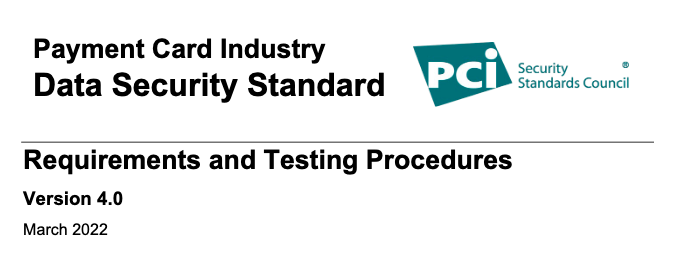The PCI Security Standards Council (SSC), the organization that oversees the Payment Card Industry Data Security Standard (PCI DSS), this week announced the release of PCI DSS v4.0.
PCI DSS 4.0 replaces version 3.2.1, which PCI SSC released in 2018. The goal of the latest version of the standard is to “address emerging threats and technologies and enable innovative methods to combat new threats” to customer payment information.
PCI DSS 4.0, detailed in a 360-page document, was created based on feedback from more than 200 members of the global payments industry. A summary of the changes is presented in a separate document.
The changes highlighted by PCI SCC include the implementation of MFA for all access to cardholder data environments, the replacement of the term “firewalls” with “network security controls” to support a broader range of security technologies, and increased flexibility for organizations to show how they are using different methods for achieving security objectives. Many of the new requirements are related to targeted risk analysis.
Translations of the new documents are expected to become available over the next few months.
Due to the fact that implementing the updates can take some time, version 3.2.1 will remain active until March 31, 2024. PCI SSC noted that some of the new requirements are initially considered best practices, but they will become effective on March 31, 2025. After this date, they will be fully considered in PCI DSS assessments.
“The last update to the PCI DSS was in 2018, and the world has certainly changed since then,” said Tim Erlin, VP of strategy at Tripwire. “Any additional emphasis on securely configuring systems is a welcome addition to cybersecurity best practices. While the previous version of the PCI DSS addressed secure configuration, it unfortunately focused on changing vendor-supplied default passwords. Secure configuration management goes well beyond vendor-supplied passwords, and it’s great to see the new version of the standard take a more expansive approach to the requirement.”
“Zero Trust Architecture has grown in adoption since the previous version of the PCI DSS was released in 2018,” Erlin added. “The new version of the standard makes room for Zero Trust approaches to authentication and authorization with allowances for ‘dynamically analyzed’ security posture as a mechanism for providing ‘real-time access to resources’ as an alternative to rotating passwords. Keeping up to date with best practices in cybersecurity is important in order to avoid organizations downgrading security in order to maintain compliance.”
Related: What You Need to Know About PCI DSS Compliance this Holiday Season
Related: Contactless Payment Card Hack Affects Apple Pay, Visa
